-
 Bitcoin
Bitcoin $83,958.5270
2.13% -
 Ethereum
Ethereum $1,879.4414
4.19% -
 Tether USDt
Tether USDt $0.9997
-0.04% -
 XRP
XRP $2.1265
2.78% -
 BNB
BNB $613.1925
2.97% -
 Solana
Solana $128.9499
2.16% -
 USDC
USDC $1.0000
0.00% -
 Dogecoin
Dogecoin $0.1729
5.20% -
 Cardano
Cardano $0.6780
4.58% -
 TRON
TRON $0.2347
1.44% -
 Toncoin
Toncoin $4.1190
4.91% -
 Chainlink
Chainlink $13.9593
5.21% -
 UNUS SED LEO
UNUS SED LEO $9.2071
1.10% -
 Stellar
Stellar $0.2694
2.45% -
 Avalanche
Avalanche $19.4424
4.37% -
 Shiba Inu
Shiba Inu $0.0...01288
5.66% -
 Sui
Sui $2.3684
4.54% -
 Hedera
Hedera $0.1680
4.79% -
 Polkadot
Polkadot $4.1834
4.17% -
 Litecoin
Litecoin $85.0611
1.17% -
 MANTRA
MANTRA $6.2987
1.18% -
 Bitcoin Cash
Bitcoin Cash $311.8968
4.75% -
 Bitget Token
Bitget Token $4.6724
4.34% -
 Dai
Dai $1.0001
0.00% -
 Ethena USDe
Ethena USDe $0.9997
-0.04% -
 Pi
Pi $0.7176
1.90% -
 Hyperliquid
Hyperliquid $13.8420
9.60% -
 Monero
Monero $217.8276
0.72% -
 Uniswap
Uniswap $6.1867
5.17% -
 Aptos
Aptos $5.3702
3.61%
How to reduce transaction fee losses when trading XRP on Binance?
Binance charges dynamic XRP fees based on trading volume; higher volumes and strategic trading can significantly reduce costs. Always check Binance's latest fee structure.
Mar 30, 2025 at 07:35 am
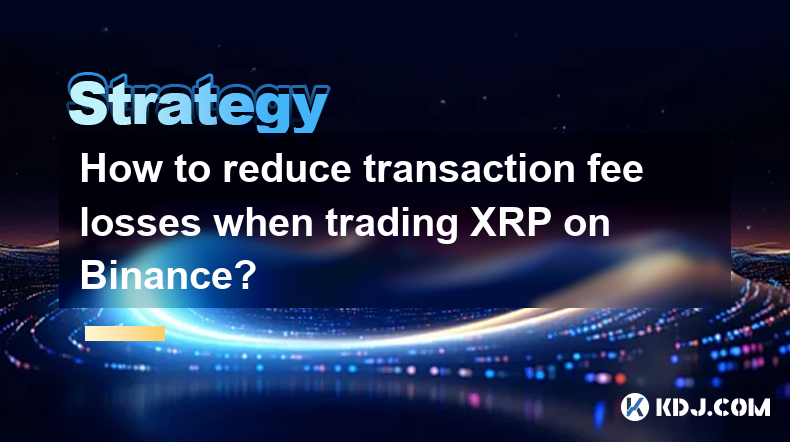
Understanding XRP Transaction Fees on Binance
Binance, like other cryptocurrency exchanges, charges transaction fees for trading XRP. These fees are a percentage of the trade value or a flat fee, depending on your trading volume and Binance's fee structure. Minimizing these fees is crucial for maximizing your profits, especially when trading volatile assets like XRP. Understanding how these fees are calculated and the factors influencing them is the first step to reducing losses. The fee structure can change, so always check Binance's official website for the most up-to-date information.
Factors Affecting XRP Transaction Fees on Binance
Several factors influence the XRP transaction fees you pay on Binance. Your trading volume significantly impacts your fee rate; higher volume often translates to lower fees through the VIP tier system. The trading pair you choose also plays a role, as fees may slightly differ between XRP/BTC and XRP/USDT pairings. The time of day can sometimes have a minor impact, although this is generally less significant than volume and VIP level. Finally, network congestion on the XRP Ledger itself can indirectly affect fees, though Binance generally absorbs these fluctuations.
Strategies to Minimize XRP Transaction Fees on Binance
There are several proactive strategies you can employ to reduce your transaction fee burden on Binance when trading XRP. These strategies focus on optimizing your trading behavior and leveraging Binance's features. By implementing these strategies, you can significantly reduce your overall trading costs and improve your profitability. Remember, even small savings accumulate over numerous trades.
Increase your trading volume: Achieving a higher trading volume on Binance will elevate your VIP level, leading to discounted transaction fees. This is arguably the most effective long-term strategy for reducing fees.
Utilize Binance's fee discounts: Binance frequently offers promotions and discounts on trading fees. Keeping an eye on their announcements and utilizing these opportunities can lead to substantial savings.
Time your trades strategically (if applicable): While not always predictable, periods of lower network congestion on the XRP Ledger might lead to slightly lower fees. However, this is generally a minor factor compared to volume-based discounts.
Choose optimal trading pairs: While the difference might be small, comparing fees across different XRP trading pairs (e.g., XRP/BTC vs. XRP/USDT) can sometimes reveal slight advantages.
Use Binance's API for automated trading: For high-frequency traders, using Binance's API can help automate trades and potentially optimize fee management based on real-time market conditions and fee structures. This requires a higher level of technical expertise.
Understanding Binance's Fee Structure for XRP
Binance's fee structure for XRP is a tiered system based on your 30-day trading volume. The higher your trading volume, the lower your maker and taker fees. Maker fees are charged when you add liquidity to the order book, while taker fees are charged when you remove liquidity. Understanding this distinction is key to optimizing your fee structure. Binance clearly displays these fees on their website, broken down by VIP level. Always consult their official fee schedule for the most accurate information. This information is subject to change, so regular checks are recommended.
Advanced Strategies for Minimizing XRP Transaction Fees
For more sophisticated traders, advanced strategies can further minimize transaction fee losses. These methods require a deeper understanding of market dynamics and trading strategies. These are generally more suitable for experienced traders who are comfortable with a higher level of risk and complexity.
Employ limit orders: Limit orders allow you to specify the price at which you want to buy or sell XRP. This can help you avoid paying higher taker fees by only executing trades when the market price aligns with your desired price.
Utilize stop-limit orders: Stop-limit orders combine the features of stop orders and limit orders, offering a more sophisticated approach to managing risk and fees. They help mitigate the risk of slippage and potentially reduce taker fees.
Participate in Binance's liquidity programs: Some programs incentivize users to provide liquidity to the exchange. By actively participating in these programs, you can earn rewards that can offset your trading fees. These programs often have specific requirements and terms.
Common Questions and Answers
Q: Are XRP transaction fees on Binance fixed?
A: No, XRP transaction fees on Binance are not fixed. They are tiered based on your 30-day trading volume, resulting in a dynamic fee structure. Higher trading volumes generally lead to lower fees.
Q: How often does Binance update its fee structure?
A: Binance can update its fee structure at any time. It's crucial to regularly check their official website for the most current information on fees.
Q: Can I avoid paying transaction fees on Binance?
A: While you cannot entirely avoid paying transaction fees, you can significantly reduce them by employing the strategies outlined above, such as increasing trading volume to achieve a higher VIP level and taking advantage of any promotional discounts offered by Binance.
Q: What happens if there's a high volume of XRP trades on the network?
A: High network congestion on the XRP Ledger can indirectly influence transaction times, but Binance usually absorbs these network fluctuations, meaning the impact on your fees is generally minimal. However, it might slightly increase processing time.
Q: How can I check my current VIP level on Binance?
A: Your current VIP level is usually displayed prominently on your Binance account dashboard. You can also find this information in your fee settings.
Q: Are there any hidden fees when trading XRP on Binance?
A: Binance is generally transparent about its fee structure. There shouldn't be any hidden fees. However, always carefully review the details of any trade before confirming it.
Disclaimer:info@kdj.com
The information provided is not trading advice. kdj.com does not assume any responsibility for any investments made based on the information provided in this article. Cryptocurrencies are highly volatile and it is highly recommended that you invest with caution after thorough research!
If you believe that the content used on this website infringes your copyright, please contact us immediately (info@kdj.com) and we will delete it promptly.
- AB (formerly Newton Project) rebrands to target real-world asset (RWA) tokenization
- 2025-04-01 16:10:12
- Cryptocurrency Entrepreneur Chun Wang and a Team of 3 Astronauts Set Off on a Historic SpaceX Flight
- 2025-04-01 16:10:12
- Pi Network Continues to Struggle, Nearing a New All-Time Low
- 2025-04-01 16:05:12
- The memecoin hype is dying. Trading on pump dot fun is down by 94%.
- 2025-04-01 16:05:12
- Pi Network’s Price Plummets as Bearish Momentum Grows
- 2025-04-01 16:00:11
- Aptos (APT) and Sonic (S) Have Seen Notable TVL Growth, While Solana (SOL), Ethereum (ETH), and Arbitrum (ARB) Have Experienced Decreases
- 2025-04-01 16:00:11
Related knowledge
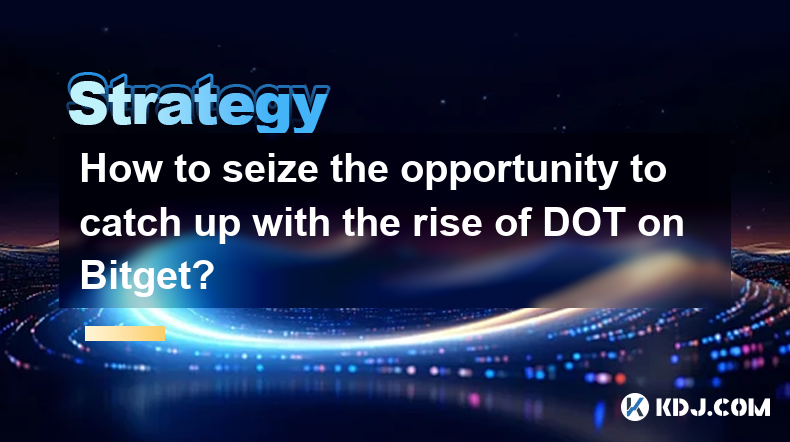
How to seize the opportunity to catch up with the rise of DOT on Bitget?
Mar 31,2025 at 07:29pm
Understanding the DOT/Bitget OpportunityPolkaDot (DOT) is a prominent cryptocurrency known for its innovative cross-chain interoperability solutions. Bitget is a well-established cryptocurrency exchange offering a variety of trading options, including DOT trading pairs. Seizing opportunities within this pairing requires understanding market dynamics, r...
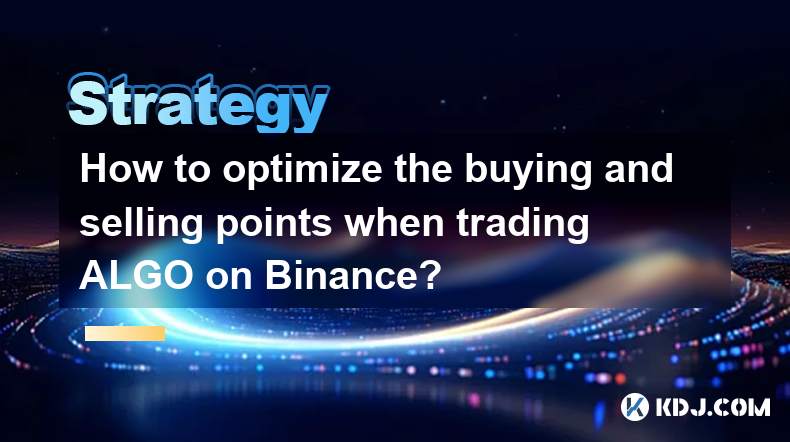
How to optimize the buying and selling points when trading ALGO on Binance?
Mar 31,2025 at 12:28am
Understanding ALGO Price Volatility on BinanceAlgorand (ALGO) price, like most cryptocurrencies, is highly volatile. Successful trading requires understanding these fluctuations and identifying optimal entry and exit points. This involves analyzing market trends, using technical indicators, and managing risk effectively. Ignoring these factors can lead...
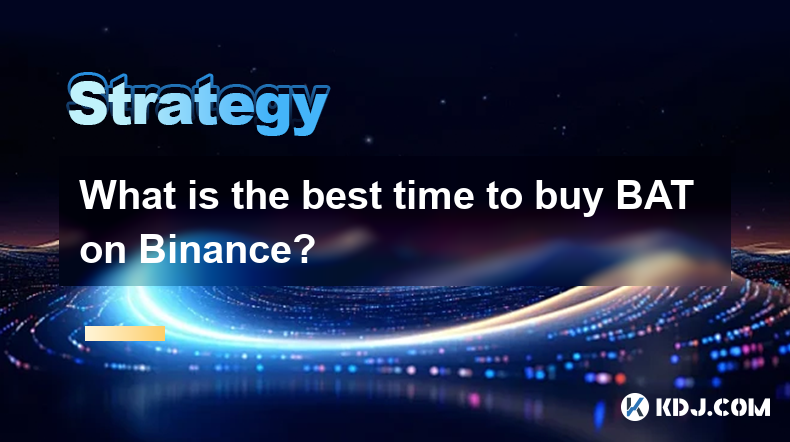
What is the best time to buy BAT on Binance?
Apr 01,2025 at 02:07am
There's no single 'best' time to buy Basic Attention Token (BAT) on Binance, or any cryptocurrency for that matter. The cryptocurrency market is incredibly volatile, influenced by a multitude of factors, making precise prediction impossible. Timing the market perfectly is a fool's errand. Instead, focus on a long-term strategy and consider your persona...
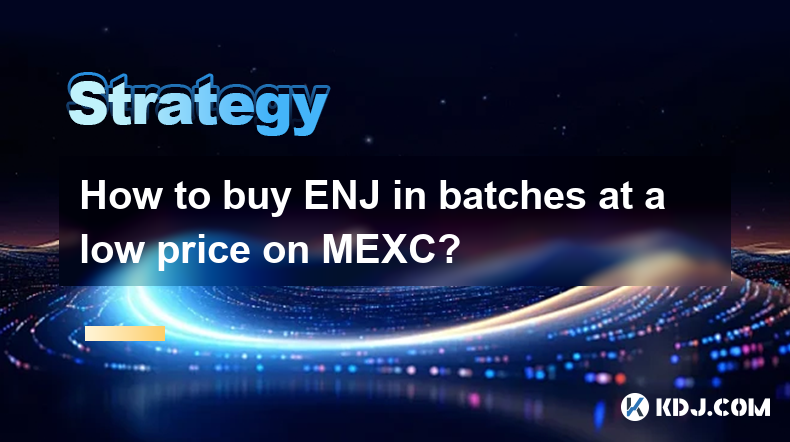
How to buy ENJ in batches at a low price on MEXC?
Mar 30,2025 at 10:28am
Understanding Batch Buying and Price FluctuationsBuying ENJ (Enjin Coin) in batches on MEXC, or any exchange, aims to mitigate the risk of buying high. Cryptocurrency prices are incredibly volatile. Purchasing a large amount at once exposes you to significant losses if the price drops immediately after your purchase. Batch buying spreads out your inves...
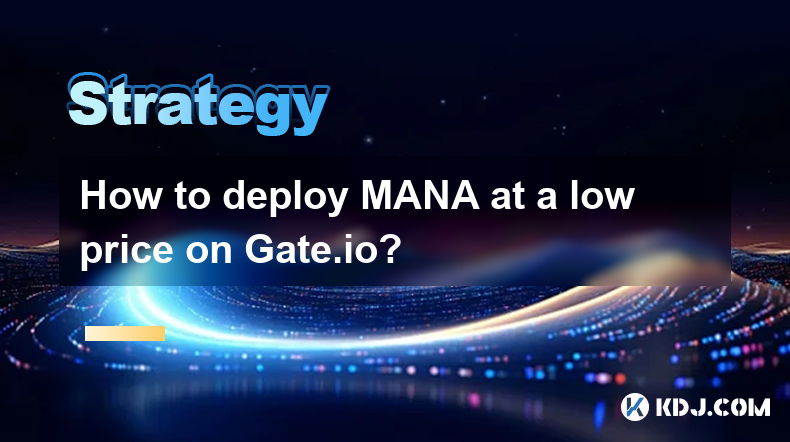
How to deploy MANA at a low price on Gate.io?
Mar 30,2025 at 07:56am
Understanding MANA and Gate.ioDecentraland's native token, MANA, fuels its virtual world platform. Gate.io is a popular cryptocurrency exchange offering a wide range of digital assets, including MANA. Deploying MANA, in this context, refers to purchasing and holding it on the Gate.io exchange. Achieving a low price requires strategic timing and underst...
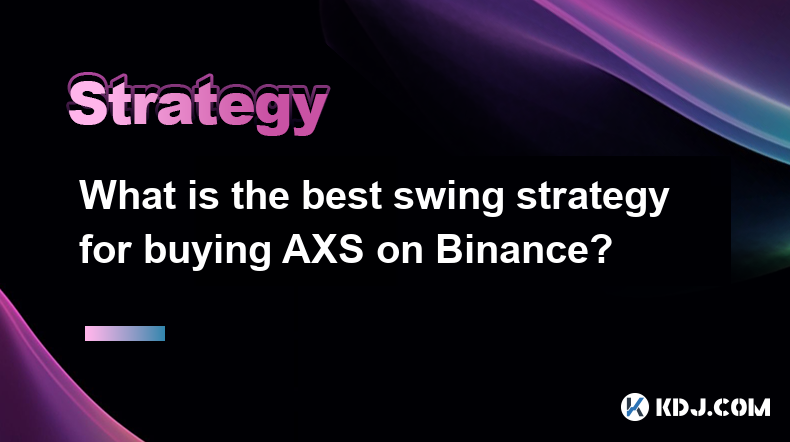
What is the best swing strategy for buying AXS on Binance?
Mar 31,2025 at 04:43pm
Understanding AXS and Swing Trading on BinanceAxie Infinity Shards (AXS) is the governance token of the Axie Infinity game. Its price is volatile, offering opportunities for swing trading, a strategy that involves holding assets for a few days or weeks to capitalize on price swings. Binance, a major cryptocurrency exchange, provides a platform for trad...

How to seize the opportunity to catch up with the rise of DOT on Bitget?
Mar 31,2025 at 07:29pm
Understanding the DOT/Bitget OpportunityPolkaDot (DOT) is a prominent cryptocurrency known for its innovative cross-chain interoperability solutions. Bitget is a well-established cryptocurrency exchange offering a variety of trading options, including DOT trading pairs. Seizing opportunities within this pairing requires understanding market dynamics, r...

How to optimize the buying and selling points when trading ALGO on Binance?
Mar 31,2025 at 12:28am
Understanding ALGO Price Volatility on BinanceAlgorand (ALGO) price, like most cryptocurrencies, is highly volatile. Successful trading requires understanding these fluctuations and identifying optimal entry and exit points. This involves analyzing market trends, using technical indicators, and managing risk effectively. Ignoring these factors can lead...

What is the best time to buy BAT on Binance?
Apr 01,2025 at 02:07am
There's no single 'best' time to buy Basic Attention Token (BAT) on Binance, or any cryptocurrency for that matter. The cryptocurrency market is incredibly volatile, influenced by a multitude of factors, making precise prediction impossible. Timing the market perfectly is a fool's errand. Instead, focus on a long-term strategy and consider your persona...

How to buy ENJ in batches at a low price on MEXC?
Mar 30,2025 at 10:28am
Understanding Batch Buying and Price FluctuationsBuying ENJ (Enjin Coin) in batches on MEXC, or any exchange, aims to mitigate the risk of buying high. Cryptocurrency prices are incredibly volatile. Purchasing a large amount at once exposes you to significant losses if the price drops immediately after your purchase. Batch buying spreads out your inves...

How to deploy MANA at a low price on Gate.io?
Mar 30,2025 at 07:56am
Understanding MANA and Gate.ioDecentraland's native token, MANA, fuels its virtual world platform. Gate.io is a popular cryptocurrency exchange offering a wide range of digital assets, including MANA. Deploying MANA, in this context, refers to purchasing and holding it on the Gate.io exchange. Achieving a low price requires strategic timing and underst...

What is the best swing strategy for buying AXS on Binance?
Mar 31,2025 at 04:43pm
Understanding AXS and Swing Trading on BinanceAxie Infinity Shards (AXS) is the governance token of the Axie Infinity game. Its price is volatile, offering opportunities for swing trading, a strategy that involves holding assets for a few days or weeks to capitalize on price swings. Binance, a major cryptocurrency exchange, provides a platform for trad...
See all articles























































































